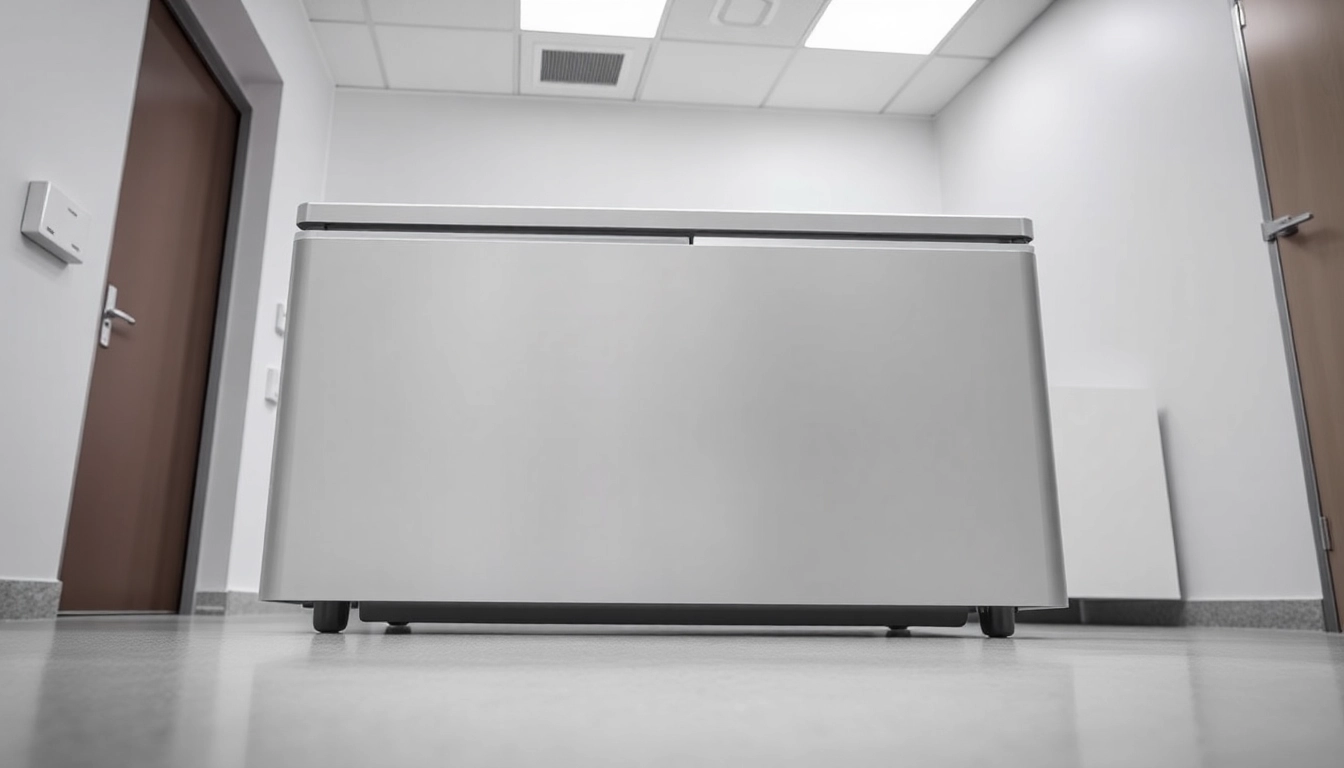Understanding Credo Coolers
What is a Credo Cooler?
The world of medical transportation requires solutions that guarantee stability and reliability, especially regarding temperature-sensitive materials. The credo cooler stands at the forefront of this technology. Designed primarily to transport pharmaceuticals, vaccines, and medical supplies, a Credo cooler is an insulated shipping container that helps maintain critical temperatures throughout transit. These coolers are engineered using advanced thermal protection materials and employ specially designed phase change materials (PCM) to ensure that contents remain within specified temperature ranges for extended periods, even without external power sources.
Applications in Medical Transport
Credo coolers have become essential in various scenarios within the healthcare sector. They play crucial roles in:
- Emergency Medical Services (EMS): Coolers designed for EMS workers often transport whole blood, organs, and other vital materials that need strict temperature adherence.
- Pharmaceutical Companies: Pharmaceutical representatives frequently rely on Credo coolers to transport vaccines and sensitive drugs, maintaining integrity from point A to point B.
- Clinical Research Trials: Many clinical trials involve temperature-sensitive biological samples; utilizing a Credo cooler ensures these samples are preserved appropriately.
Key Features of Credo Coolers
What sets Credo coolers apart are their innovative features, designed to optimize performance and reliability:
- Phase Change Materials: Utilizing PCM allows for precise temperature control, enabling them to maintain a stable environment for critical materials.
- Durability: Made from high-quality materials, these coolers are built robustly to withstand the rigors of transportation.
- Lightweight Design: Despite their sturdiness, many models are lightweight, making them easier to transport without compromising their thermal efficiency.
- Versatile Sizes: Credo coolers come in various sizes to cater to differing quantities and volumes of medical supplies.
- Temperature Ranges: Depending on the model, Credo coolers can provide temperature maintenance from as low as 2°C up to 25°C, depending on the healthcare needs.
Types of Credo Coolers Available
Overview of Crēdo ProMed™
The Crēdo ProMed series is engineered specifically for medical transport. These coolers are commonly used in field emergencies due to their ability to maintain temperatures over varying durations. The ProMed series features containers such as the Credo ProMed Series Four, capable of preserving temperatures between 2°C and 8°C.
This series boasts various sizes, making it suitable for transporting different volumes of medical materials. For example, the Crēdo ProMed offers models that hold volumes of 2L and beyond, making them versatile for all kinds of medical transport needs.
Introduction to Credo Cube™
The Credo Cube™ is another innovative offering from the Credo cooler lineup, targeting the demands of medical transport that requires prolonged temperature stability. Capable of maintaining a controlled temperature environment for up to five days, these coolers are essential when long-distance transportation is unavoidable.
Designed for both shipment and storage, the Credo Cube™ is reusable and constructed with durable materials that support their repeated use while remaining efficient in various external temperature conditions.
Comparative Analysis of Models
When considering which Credo cooler to employ, it’s essential to assess the unique features of each model:
| Model | Volume | Temperature Range | Duration |
|---|---|---|---|
| Crēdo ProMed Series Four | 2L | 2° to 8°C | 48 hours |
| Credo Cube™ | Various | Controlled environment | Up to 120 hours |
Selecting between the Crēdo ProMed and the Credo Cube should depend on your specific needs for volume, duration, and required temperature stability.
How to Choose the Right Credo Cooler
Factors to Consider
Choosing the right Credo cooler requires evaluating several factors to ensure that the selected model meets specific operational requirements:
- Purpose: Assess the intended use – whether it’s for emergency medical transport, routine pharmaceutical deliveries, or long-term storage will guide your choice.
- Volume Capacity: Consider how much material you’ll need to transport; larger capacities are better for bulk items.
- Duration of Transport: Determine how long the item will remain in transit to select a model that provides adequate temperature maintenance.
Assessing Temperature Requirements
The temperature needed to maintain the integrity of medical supplies is critical. Always consult your product guidelines to understand their temperature requirements. Credo coolers can provide varying ranges; evaluating your materials will ensure the right match:
- Cold Chain Standards: For items requiring strict cold chain practices (like vaccines), the Crēdo ProMed models might be more suitable.
- Average Temperature Sustainability: For others requiring milder conditions, such as the Credo Cube, can maintain moderate temperatures longer.
Budget Considerations
It’s also vital to consider your budget when selecting a Credo cooler. Many models provide varying levels of technology and materials, influencing their price. Weighing costs against operational necessity will ensure efficient investment:
- Long-Term Savings: Investing in reusable models like the Credo Cube can provide significant savings compared to single-use options over time.
- Initial Investment: While some models may appear more expensive, their longevity and effectiveness may justify the upfront cost.
Best Practices for Using Credo Coolers
Setup and Preparation Steps
To optimize the performance of your Credo cooler, follow these best practices upon setup:
- Preconditioning: Prior to loading, precondition the cooler by cooling it for several hours.
- Load Strategically: Place products in the cooler so that they do not make direct contact with the cooler’s walls; this aids in better temperature management.
- Close Properly: Ensure the lid is securely fastened before transport to minimize temperature loss.
Maintaining Temperature Integrity
During transit, maintaining temperature integrity is paramount. Consider these strategies:
- Monitor Conditions: Use temperature tracking devices when transporting sensitive items.
- Limit Exposure: Reduce the time that the cooler remains open to maintain a stable environment.
Post-Transport Care and Storage
After the materials have been delivered, care for the cooler is vital for its longevity:
- Thorough Cleaning: Clean the cooler with appropriate solutions to prevent contamination.
- Proper Storage: Store the cooler in a clean, dry, and cool environment when not in use to extend its lifetime.
Future Trends in Medical Cooling Solutions
Innovations in Cooling Technology
As the healthcare industry evolves, so does technology. The future of Credo coolers may involve:
- Smart Monitoring: Integrated IoT devices that provide real-time tracking and alerts.
- Advanced Phase Change Materials: New formulations could provide even longer temperature stability without increasing weight or size.
Eco-friendly Alternatives
Increasingly, sustainability in packing materials is becoming a central focus. Future iterations of cooler technology may feature:
- Biodegradable Insulation: Moving towards renewable materials that lessen environmental impact.
- Energy-efficient Designs: Innovative containers that maintain temperatures efficiently while consuming less energy.
Market Demand and Future Projections
The market for medical transport solutions is projected to expand significantly, driven by increased demand for temperature-sensitive products. The integration of advanced cooling technologies and increased regulatory standards will likely position Credo coolers as crucial tools for medical and pharmaceutical transport for years to come.















Leave a Reply